Foo Hai Chan Monastery
Foo Hai Ch’an Monastery (Chinese: 福海禅寺), is a Buddhist monastery in Singapore. The foundation was originally set up by Venerable Hong Zong of Taiwan. The present premises are located at Geylang, Singapore.
Other Deities 众神/佛
Buddha 释迦牟尼佛
Siddhartha Centre 盘古圣皇佛堂
Pan Gu 盘古
Tai Shang Lao Jun 太上老君
Guanyin 观音
Mile Fo (Maitreya) 米勒佛
He Ye Yun 何野云
Ji Gong 济公
Morning Gong –
“In the morning, the gong is set to create a stream of intense sounds followed by a slow pace. This is to remind the mass that they are have come to the end of a long night and do not indulge oneself in deep unconsciousness; in the evening, the gong is sounded in the reverse order, that is, slow then a faster pace, this is to remind everyone that they should be aware of illusions and unconsciousness; also that they must help relieve all beings in the nether world from suffering. The gongs in Chinese Temples are sounded one hundred and eight times each time, because sentient beings have one hundred and eight types of worries.”
With that being said, my father led my family up to the platform to sound off the gong so as to “scare off the demons” in his words. (I’m not sure if we’re allowed to do that but nobody came to stop us anyway.)
“Incense along with flowers and fruit represent some of the primary gifts that Buddhist practitioners offer during Buddhist prayer or on their altars. Incense in particular stands for ethics and morality. But these offerings only have meaning if the follower also has right conduct. Incense also reminds the practitioner of the path of the Middle Way, or moderation, and offers the key to enlightenment and Buddhahood. It creates a feeling of serenity.”
Guanyin –
“In Chinese Buddhism, Guan Yin is synonymous with the Bodhisattva Avalokitesvara, the pinnacle of mercy, compassion, kindness and love.
(Bodhisattva- being of bodhi or enlightenment, one who has earned to leave the world of suffering and is destined to become a Buddha, but has forgone the bliss of nirvana with a vow to save all children of god.”
“Guan Yin is also depicted with a thousand arms and varying numbers of eyes, hands and heads, sometimes with an eye in the palm of each hand, and is commonly called “the thousand-arms, thousand-eyes” Bodhisattva. In this form she represents the omnipresent mother, looking in all directions simultaneously, sensing the afflictions of humanity and extending her many arms to alleviate them with infinite expressions of her mercy, while the thousand eyes help her see anyone who may be in need.”
Guanyin is a deity I can easily relate to as my mother has exposed me to her ways of teaching since young. To me, Guanyin is benevolent and kind, yet at the same time she is strong and in a sense, omnipotent.
On this trip, the interior of the temple was closed hence we were unable to enter and pay our respects hence I could not get a good photo of Thousand-arms Guanyin.
Bodhi Tree –
From the photo above:
“A branch of the Bodhi Tree in Bodhigaya, India where Lord Buddha attained enlightment presented by the Prime Minister of Sri Lanka
MR D. B. WIJETUNGA
24 December 1991″
“The Bodhi-Tree is a symbolic representation of the individual’s journey to infinity. As the seed which begins tiny and hard grows open and free, so should the mind and heart. The tree is rooted in the ground as the self is rooted in matter. But the seed grows beyond the ground, as it perceives its environment, cares about it, and ultimately leaves the limitations of the body and matter behind. The branches reach towards the heavens yet the vines of the banyan reach towards the earth. Such is the state of mankind – always being pulled in two directions. One direction is freedom, ultimate liberation, and the transcendence of boundaries. The other direction is security, rootedness, comfort, and tradition – the self that will not turn away from the earth. Some people may justify behavior by Buddhist or other ethics and ritual, but will ultimately seek comfort rather than freedom. Such people should rest peacefully at the roots of the tree and never climb it.
For the others, the spiritual explorers, comfort and security are left behind. There will ultimately come a question: Which world do you choose? Only those who seek the upper branches of the tree and liberation can progress and follow the stages of the watches of the night.
There were many reasons for the historical Buddha’s incarnation. One was to provide a model for those that seek freedom.
”
The Bodhi Tree is easily characterised by the heart-shaped leaves and the tail of the leaf that curls up, towards the sky.
Pen sketch of the Morning Gong at Foo Hai Chan Monastery which I later went home to add some splashes of watercolour.
Overall, the visit to Foo Hai Chan Monastery made me feel peaceful especially in a hectic environment and schedule due to studying in a University. The simple yet modern(due to the marble flooring) architecture of the Monastery is pleasant and inviting.



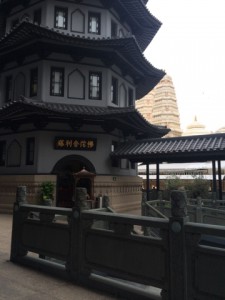
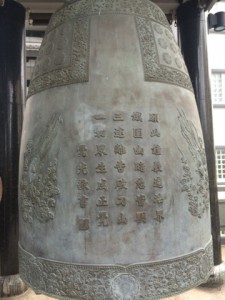

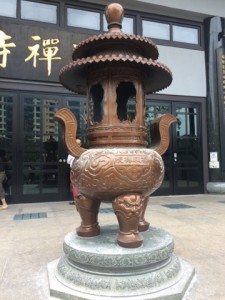

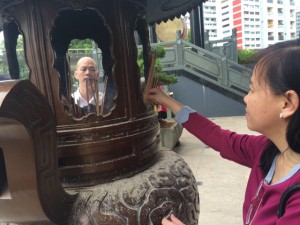
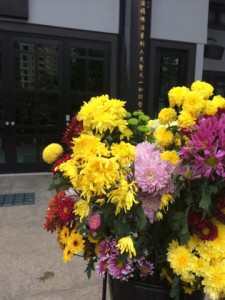
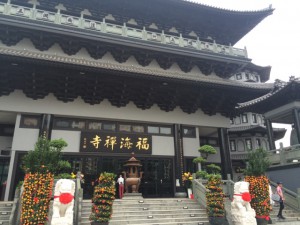

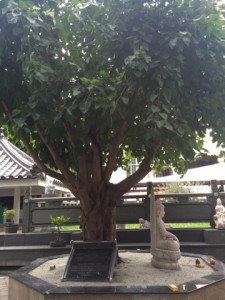
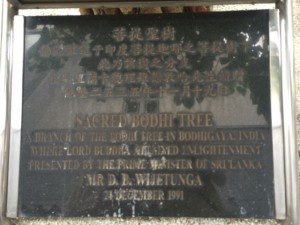
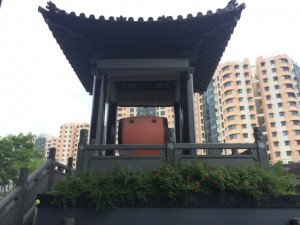
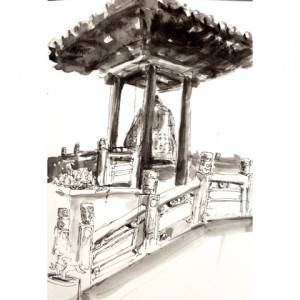
You must be logged in to post a comment.